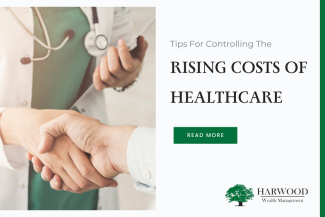
Tips for Controlling the Rising Cost of Healthcare
Businesses can shift to a value-based care model which can reduce costs
Keeping a lid on rising health care costs will likely remain at the forefront for organizations this year, for good reason. A confluence of factors – including widespread inflation, economic instability and increased health care utilization as a result of the pandemic – drove larger-than-usual cost increases for 2022 and predicted increases for 2023.
U.S. employers expect medical plan costs per employee to be 5.6% higher on average in 2023, Mercer reported last year, a significant jump from 2022's expected premium increase of 4.4%.
Controlling healthcare costs is a major concern for individuals, businesses, and governments. The rising cost of healthcare has become a significant issue that affects millions of people in the United States and around the world. While there have been efforts to reduce healthcare costs, it remains a top priority for policymakers and healthcare professionals alike.
The Cost of Healthcare
The cost of healthcare in the United States has been steadily rising over the past few decades. According to the Centers for Medicare and Medicaid Services, healthcare spending in the United States reached $3.8 trillion, accounting for over 17% of the country's Gross Domestic Product (GDP). Healthcare costs continue to outpace inflation and wage growth, making it difficult for individuals and businesses to afford.
Several factors contribute to the rising cost of healthcare, including advances in medical technology, an aging population, and an increase in chronic diseases. Additionally, administrative costs associated with billing and insurance claims add to the overall cost of healthcare.
The high cost of prescription drugs is also a significant contributor to rising healthcare costs. While pharmaceutical companies argue that high drug prices are necessary to fund research and development, critics point out that the high cost of drugs prevents many people from accessing life-saving treatments.
The Impact of Rising Healthcare Costs
The rising cost of healthcare has several impacts on individuals, businesses, and governments. For individuals, high healthcare costs can result in financial hardship and even bankruptcy. Many people have to choose between paying for healthcare and other basic needs, such as food and housing.
For businesses, high healthcare costs can lead to lower profits and reduced competitiveness. Many businesses struggle to offer health insurance benefits to their employees, which can make it difficult to attract and retain talent.
The issue of controlling healthcare costs has been a long-standing challenge for policymakers, healthcare providers, and patients alike.
With the escalating cost of healthcare services, the affordability and accessibility of healthcare have become a major concern for people worldwide. The
high cost of healthcare has a significant impact on individuals, businesses, and governments, making it imperative to prioritize efforts to control healthcare costs.
Addressing Rising Healthcare Costs
To address the challenge of controlling healthcare costs, policymakers and healthcare providers have implemented several strategies. One of the most common strategies is to shift towards value-based care models. Value-based care emphasizes the quality and outcome of healthcare services, rather than the number of services provided. This approach incentivizes healthcare providers to focus on preventive care, early diagnosis, and effective treatment, which can lead to better health outcomes and lower costs.
Another strategy that has gained popularity is the use of technology to improve the efficiency of healthcare delivery. Telemedicine, remote patient monitoring, and other digital health technologies have made it possible for patients to receive care in a more cost-effective manner, without having to physically visit a healthcare facility. These technologies also help healthcare providers to manage chronic diseases and reduce hospital readmissions, which can result in significant cost savings.
Policymakers have also taken steps to address the high cost of pharmaceuticals, which is a significant contributor to healthcare costs. One approach is to encourage the use of generic drugs, which are significantly cheaper than their brand-name counterparts. Additionally, policymakers have advocated for price transparency, which allows patients to make informed decisions about their healthcare and encourages competition among drug manufacturers.
While several strategies have been implemented to address the challenge of rising healthcare costs, there is still much work to be done. By adopting a value-based care model, leveraging technology to improve healthcare delivery, and addressing the high cost of pharmaceuticals, healthcare systems can control costs and improve health outcomes for patients.
Important Disclosures
The opinions voiced in this material are for general information only and are not intended to provide specific advice or recommendations for any individual.
Gross Domestic Product (GDP) is the monetary value of all the finished goods and services produced within a country’s borders in a specific time period, though GDP is usually calculated on an annual basis. It includes all of private and public consumption, government outlays, investments and exports less imports that occur within a defined territory.
This article was prepared by FMeX.
LPL Tracking #1-05364458

